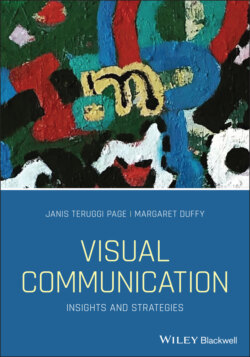Читать книгу Visual Communication - Janis Teruggi Page - Страница 25
Form and Content
ОглавлениеREAD THIS BOOK! That statement in all caps and in boldface, communicates something different from “read this book.” How is it different from read this book? And why include it here? We include it because it reveals, in an unexpected way, how the form and not just the content of a simple sentence can communicate and conform to or violate cultural norms.
You probably don't think of letters and words as visuals, but even the choice of a font can make a big difference in the meanings people take away from the message. Imagine a condolence card that says “With Heartfelt Sympathy! ” It feels strange because it violates our cultural expectations about what's appropriate for such a message. Because type and text are so much part of our environments, we may not think of them as visual. But each typeface, each font, has a different personality and may convey different emotions and meanings. Perhaps without even being aware of it, you have certain expectations of the “rightness” of using a certain font to communicate a particular message.
Apple's “Get a Mac” video campaign offers another example of how content can be differentiated by its form (Figure 1.3). Actors and humorists John Hodgman and Justin Long posed as human interpretations of a PC and a Mac. Against a white background, Long, dressed in casual clothes, introduced himself, “Hello, I'm a Mac.” Hodgman, dressed in a more formal suit and tie, adds, “And I'm a PC.” Even before the characters act out attributes of each brand (a laid‐back Mac and an uptight PC), we can deduce these attributes from their form: two men standing in a blank void, staring directly at us, but one with rigid posture and business attire, and the other posed and dressed casually, hands in jeans' pockets.
Figure 1.3
Source: YouTube.
